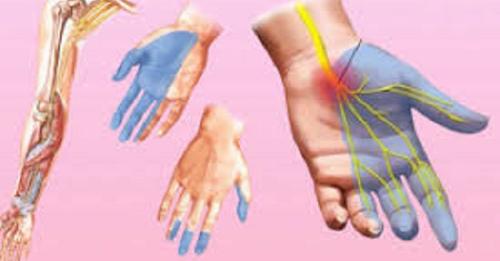posted in: TMJ Disorder |

Both Fibromyalgia and (TMD) Temporomandibular disorders are more prevalent among women. Several aspects link both the medical conditions. Here’re details about these conditions, the difference, and connections between the same.
What’s a TMJ disorder?
Joints that connect your skull with the jaw are temporomandibular joints. The sliding hinge plays a crucial role in jaw movements while chewing, talking, or moving the jaw up and down. Tenderness or pain in these parts is referred to as TMJ or TMD (temporomandibular disorders).
Statistics suggest that more than 10 million Americans suffer from jaw pain every year. Women are more prone to this medical condition compared to men. Scientists have not been able to zero-in on the exact causes. But research has linked this condition’s symptoms with rheumatoid arthritis, stress, anxiety, facial injury, and teeth grinding as well as dental health issues.
Besides stiffness and jaw pain, some of the other symptoms of TMD are headaches, tiredness in the face muscles, irritable bowel syndrome, sensitivity to heat or cold, and fatigue. Popping, clicking sounds while opening or closing the mouth also indicate TMJ disorder.
TMD’s symptoms match with those for gum disease, tooth decay, arthritis, sinus problems as well. Thus, the dentist conducts a proper oral examination and checks the patient’s medical history. The dentist may recommend CT scan, MRI, full face X-rays for diagnosing TMD.
Surgery remains the last option for treating these disorders. Depending on the severity of the condition, the disease can be managed with over-the-counter medications and making changes in eating habits. Patients are also advised to avoid specific jaw movements, and opting for massage as well as other relaxation techniques.
If the TMD is linked with dental health, the dentist may recommend dental work like opting for braces, bridges, and crowns. Depending on the patient’s oral health, the oral care expert may also recommend implants for replacing missing teeth. For some, an orthotic occlusal plate-based treatment for balancing the jaw’s skeletal-musculature relationship can be the only option.
What’s Fibromyalgia?
Fibromyalgia or Fibromyalgia Syndrome (FMS) is a medical condition that affects the patient’s muscles and bones. Besides widespread musculoskeletal pain, the patient may also experience mood issues and fatigue.
Fibromyalgia affects the pain signal processing in the brain, resulting in amplified pain. Due to the wide range of symptoms, the disease is often misdiagnosed.
Research has not yet concluded when it comes to the exact causes of Fibromyalgia. However, most of the patients happen to be women, especially those suffering from mood disorders, anxiety, arthritis, or the ones who faced physical abuse in the past. Individuals with a family history in Fibromyalgia are more likely to get it.
Some of the other most reported symptoms of this medical condition are low pain threshold, insomnia, sensitivity to heat as well as cold, belly pain, and headache.
Diagnosis is complicated as its symptoms match with several other medical conditions. The doctor checks the patient’s medical history and may ask the patient to go for x-rays, blood tests along with a proper checkup to rule out lupus, arthritis, or underactive thyroid. Diagnosis also involves finding 18 tender points on various parts of the body. A physician creates a plan for managing the condition based on a two-part scoring system that helps in understanding the areas of the body that are affected. A combination of moderate exercise, pain relievers, muscle relaxers, and other drugs can help in controlling the condition. The physician may suggest the patient opt for acupuncture, massage, and practice Yoga as well. The treatment focuses on strengthening the muscles and improving the ability to move.
Fibromyalgia TMJ connection
As per the research conducted by researchers at the University of California (San Francisco) Department of Restorative Dentistry, TMJ or TMD Disorder and Fibromyalgia are separate disorders. But, case studies have found that individuals who have Fibromyalgia do show symptoms of temporomandibular joints disease.
Fibromyalgia happens to be a generalized disorder, while TMJ is a local one. But, most of the patients diagnosed with FMS also suffer from TMD. Trigger points in both the conditions appear like bumps and lumps.
The patients who are suffering from TMD, as well as FMS, experience problems in muscles linked with shoulders, neck, face, head, and the back.
Experts may use electromyography imaging for studying trigger points in TMD and FMS. Patients fail to get proper treatment for both due to the complicated diagnosis procedure.
Most of the persons suffering from TMJ Disorder and Fibromyalgia also happen to workaholics with bad eating habits and have lesser time to relax. So, making changes in the lifestyle, managing stress with the help of exercises, and opting for a nutritious diet are the factors recommended in both cases.
There can also be a link between fibromyalgia and jaw tooth pain. Are you searching for a trustworthy dental office that offers TMJ Disorder treatment Roswell GA? You should consider fixing an appointment at the TruCare Dentistry. Dr. Toral Ardeshna has provided effective treatment to several patients suffering from TMD.
reference<https://www.trucaredentistry.com/blog/difference-between-tmj-disorder-and-fibromyalgia/



